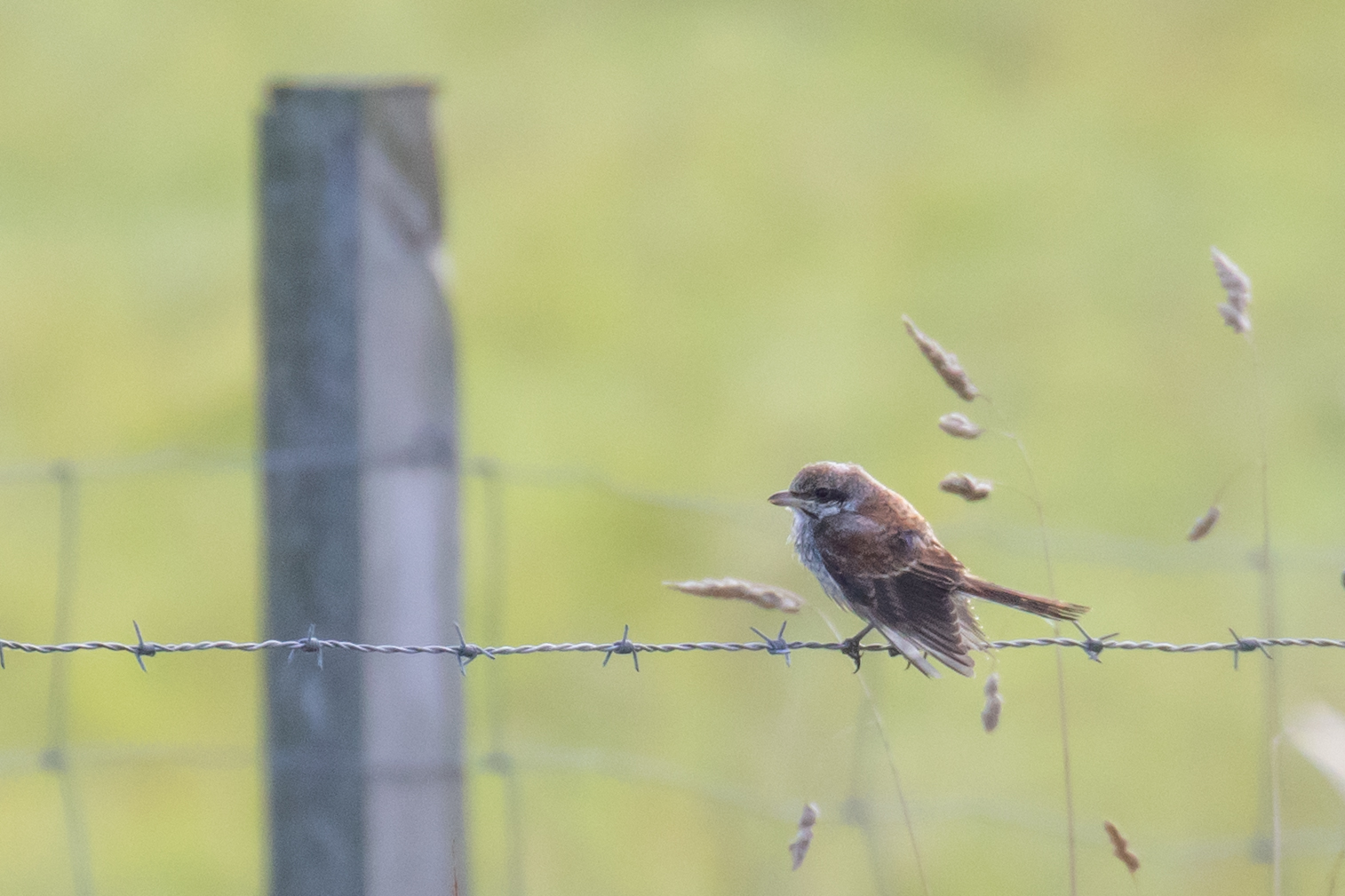This post describes some of the scarcer species that we saw on Shetland, ones that we did not see every day, but not species that count as Rare or Extraordinary Moments. These are covered in the next two blog posts. We got lucky: we saw Woodpigeon and Stock Dove in the same week. Not exactly the birds that we came here for, but unusual in Shetland terms. Our policy was to try to find our own birds, ideally slightly more scarce than the two species mentioned above, but we would also travel on news if something good turned up. Our days began by choosing which habitat we would check. We scoured fields and fences…

… walked through iris beds, ditches and wet patches. Any tree cover we came across, we checked for migrants. Virtually every patch had a Yellow-browed Warbler. We walked along headlands, alongside dry stone walls and up and down the burns. We birded from first light to last. All in all, I would say we were pretty thorough. And we did find a number of scarce species.

But rare birds are rare for a reason: they do not occur often. As the remnants of Hurricane Lorenzo sucked air from Asia and pulled it towards Shetland, expectation levels began to rise. We spent the afternoon of Sunday 6th October on Unst, right at the top of Shetland, watching Yellow-browed Warblers fizzing past. I located Britain’s most northerly Whinchat at Skaw, an Otter ran across the road in front of us near Norwick and then we began to head back to base, to Lerwick. At about 5:30pm, as we took the ferry from Belmont, Unst to Gutcher on Yell, a small piece of birding history was being made some 10km away in a plantation on nearby Fetlar: Andrew Tongue had just found Britain’s fourth Rufous-tailed Robin (see here). So near, yet so far. By the time news got out, it was dark and besides the bird was never seen again.
The following day we explored Geosetter, on the south-west coast as the easterly winds picked up. The rareometer was off the scale, we were at the right place, at the right time of year, in the right weather: there must be another monster out there somewhere? But despite our efforts, and those of many others too, we found nothing more than a few Goldcrests and the statutory Yellow-browed Warblers. Rare birds are rare. And very rare birds are very rare. I could go on, stop me when you have had enough. But the bottom line is that a big slice of luck is needed too. Just ask any of Andrew Tongue’s mates on Fetlar that evening.


Later in the week, we had a productive exploration of the Lambaness peninsular on Unst. Tramping the wet patches and burns produced 3 Jack Snipe and there was a flock of about 50 Snow Bunting feeding on the cliff edge:



I flushed a Lapland Bunting from the track, which Andy and I managed to pin down a little while later in the same spot:


Offshore, Red-throated Divers were pretty common. We saw two Black-throated Diver (off Unst and Eashaness, Mainland) and one distant summer plumaged Great Northern Diver, also off Eashaness.
There was a Pied Flycatcher in the only wood on Unst, at Halligarth and a Tree Sparrow amongst the feeding flock of 50 Mealy Redpoll, 40 Brambling, plus assorted House Sparrow, Siskin, Skylark, Meadow Pipit and Twite at Norwick. A Short-eared Owl flew past us at Twatt (more later, inevitably), as did our only Sparrowhawk of the trip a few minutes later.
We caught up with a first-winter male Red-backed Shrike on Friday 4th October near Cunningsburgh:


The Lesser Whitethroat, below, was seen in lovely early evening light in the larger of the two quarries at Sumburgh Head. I assume, perhaps inaccurately, that nearly all Lesser Whitethroats seen this late and this far north are generic “eastern” birds. Pinning them down to a specific subspecies is notoriously difficult, though Martin Garner helpfully addresses this in the Autumn part of his Challenge Series books. This bird is not particularly grey and white, but has much brown on the mantle, extending up through nape and onto the rear crown.

The tail pattern is important and fortunately I managed to get some sort of record of it as the bird darted up to take an insect from near the rock face:

The outer tail feathers, t6, are entirely white. The tip on the next outer tail feather, t5, has an obvious pale wedge. There is a hint of this on t4 too. I think this makes it a pretty good fit for a first calendar year Siberian Lesser Whitethroat, blythi, although without DNA and in-hand biometrics, we will never know for sure.
On our final full day we visited Sandness, on western Mainland to catch up with a Bluethroat, now present for its third day. We were lucky in the sense that this elusive bird was hopping about on the track when we arrived. But it remained distant, before disappearing. It was not reported again after our early afternoon sighting.

Next: Rare birds on Shetland. And after that, some Extraordinary Moments.
